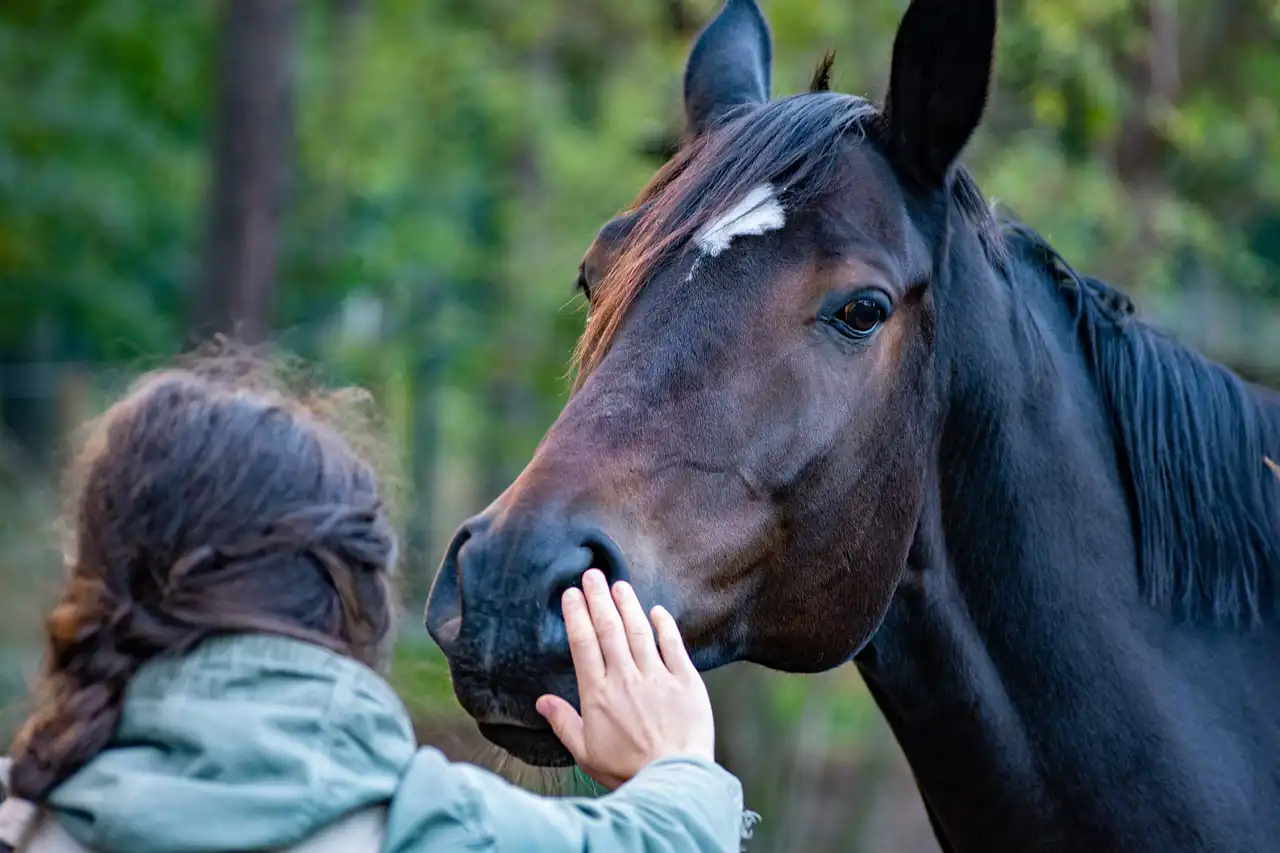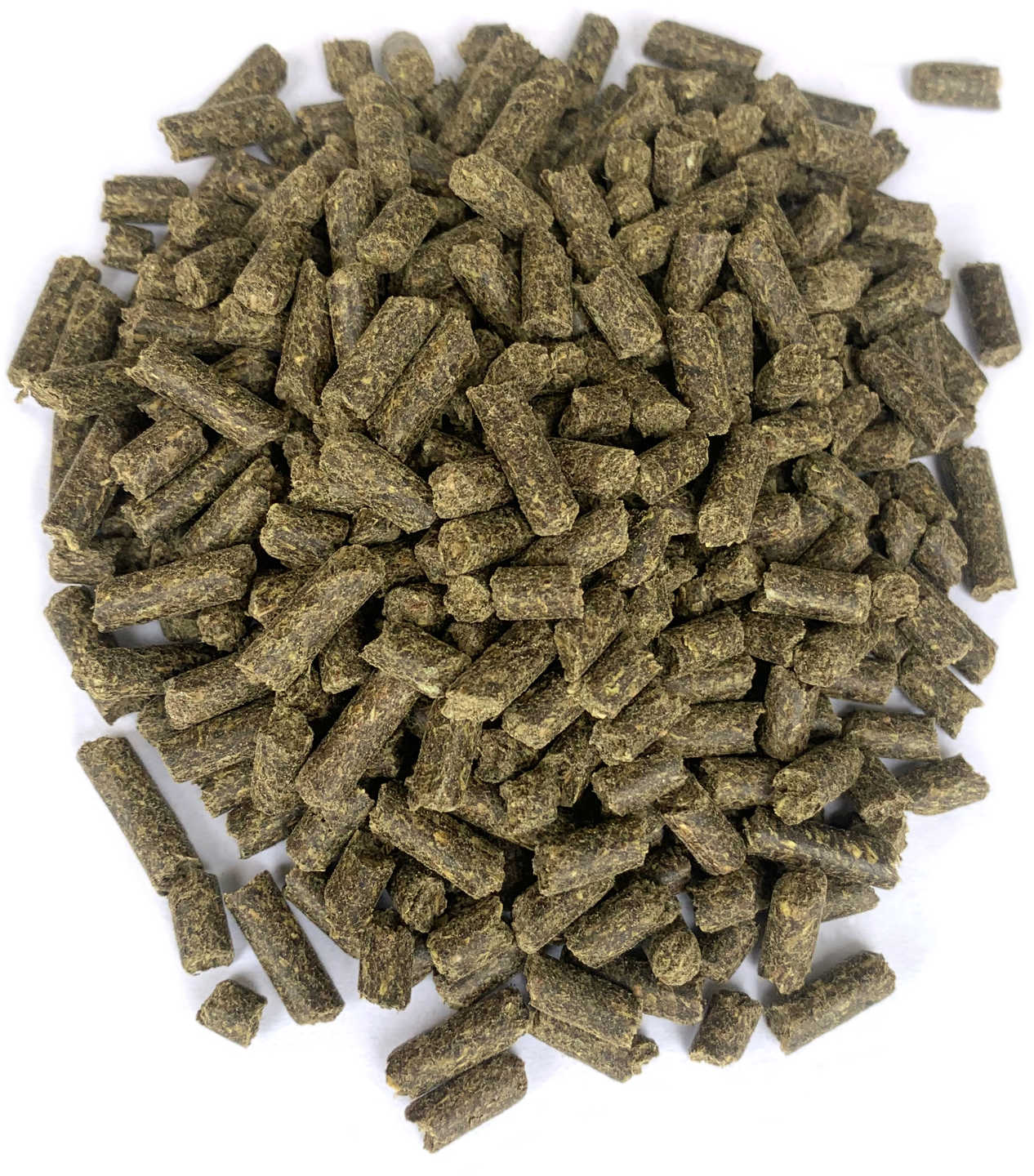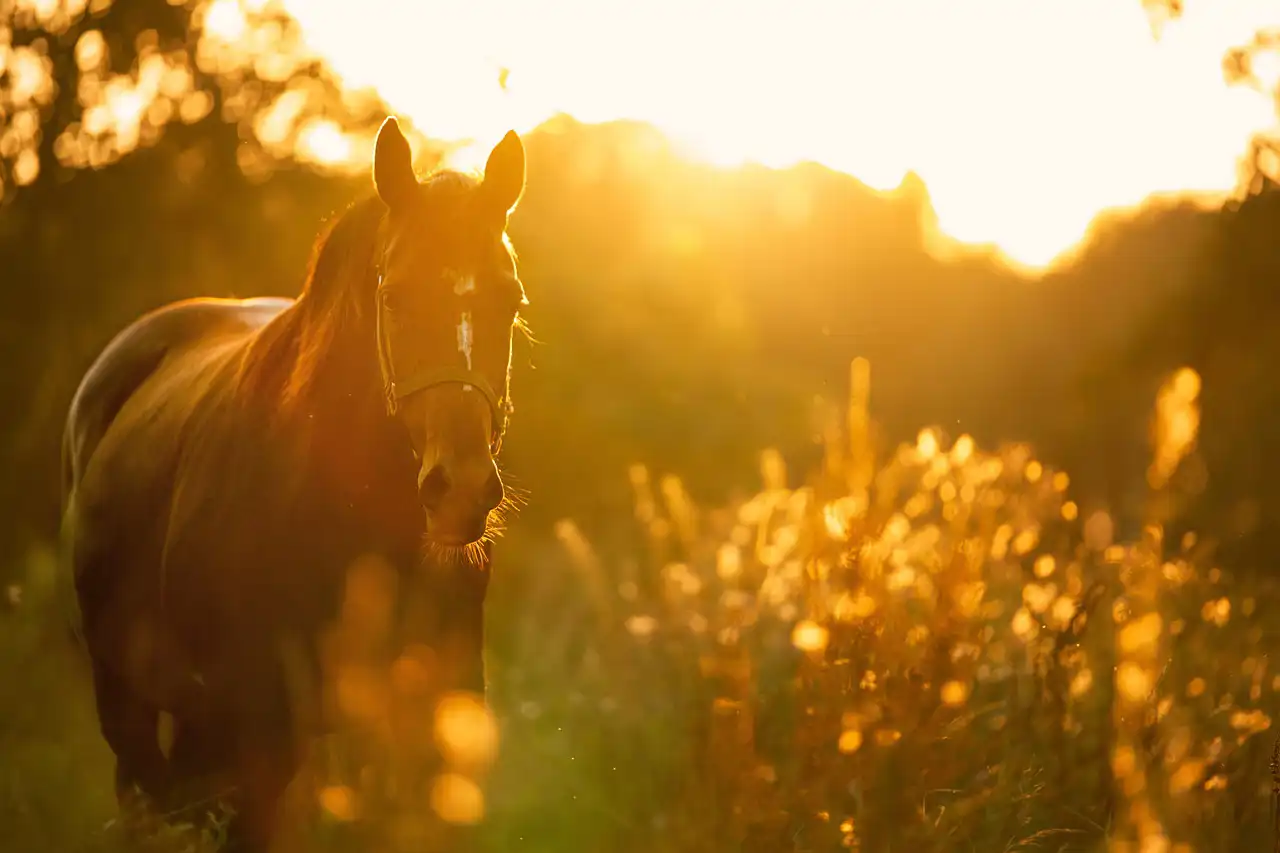How to treat laminitis in our equine companions through nutrition ?
The right food for laminitis
Horses and ponies with laminitis are not the easiest feed customers. They are overweight, have insulin insufficiency or have digestive problems. All reasons to be careful with food. Not to mention the treats.
Inflammatory process before the onset of laminitis
But horses with laminitis also suffer from an inflammatory process and therefore have an increased need for certain nutrients and trace elements. In order to provide all the necessary nutrients and minimize the risk of recurrence, it is necessary to have a well-coordinated feeding schedule. A diet rich in slowly degradable fibre is the first step. In addition, live yeast cultures, fast-fermenting fibre and, of course, vitamins and minerals may be required to promote recovery.
How do you recognize laminitis?
Symptoms of laminitis range from mild lameness to immobility. Often the front feet are affected first and sometimes the only one that bears most of the weight. Therefore, the horses lean back to relieve pain in the dermis. In severe cases, the picture is already so clear that the diagnosis can be made immediately.
What is laminitis?
The horse has terrible pain in the hooves, compare it to your fingernail coming off. In the hoof, the connection between the hoof wall and the hoof bone is loosened. The more the horse has to moves at that moment, the greater the damage and the lower the chances of recovery. Once the coffin bone is detached, it sinks down and can even penetrate through the sole of the hoof.
Treatment of laminitis
The goal of veterinary treatment is to stop the process and relieve the pain. An X-ray shows the extent of the damage. The degree of the coffin bone inclination says something about the future use of the horse. Fortunately, however, there are also many cases in which no tilting occurs and the triggering process was stopped in time.
- With special hoof shoes, the horse can walk pain-free again and recovery is possible.
- Acupuncture would also help.
- The use of leeches would also help.
- Cooling the hoof or affected leg is important. For example, you can use a REMEDY laminitis boot and fill it with ice water.
- Horses that have once suffered from laminitis are at risk of recurrence. Then we talk about chronic laminitis or a deviated hoof
How does laminitis develop?
Enzymatic disorder
The hoof wall is connected to the coffin bone by lamellae that interlock like fingers. Hoof growth is possible because this connection is dynamic rather than static. A continuous release and engagement process takes place between these slats. In this way, the growing hoof moves a little further. Certain enzymes are responsible for breaking the connection between the horseshoe and the coffin bone. These enzymes are highly active in horses with laminitis.
The feed ration influences laminitis!
Disturbed intestinal flora
Inflammatory factors and certain toxins that are elevated in the blood under certain circumstances stimulate these enzymes. A fermentation disorder in the appendix and colon can lead to such an increase in inflammatory factors or toxins in the blood. This explains the development of laminitis in horses whose bacterial flora in the large intestine is disturbed by too much concentrated feed or grass with too much sugar or fructans.
In medical studies and animal experiments on equidae, laminitis is regularly triggered by feeding large amounts of molasses.
Weight
The horse's unique anatomy can be the reason why problems only occur in the hoof. The weight and the forces acting on the slats play an additional aggravating role. In other organs of the body, the effects of inflammatory factors and toxins are less severe.
Insulin resistance and obesity
In the case of insulin resistance, the high insulin content is probably the cause of the development of laminitis. Horses with insulin resistance produce large amounts of insulin to process the sugars they absorb from the feed. The blood sugar level is more difficult to keep constant and stays high for longer after a meal. Aside from being an additional complicating factor, obesity itself may also play a role, as adipose tissue secretes certain substances that can affect these enzymes. A special diet is very important for horses with insulin resistance.
Indigestion
Every change in food, but also every change in chewing and digestion of food in the small intestine, results in a change in the intestinal flora. This is a natural process that allows the horse to adapt to the feed that is fed to it. However, when this change gets out of hand, unwanted bacteria can multiply at the expense of the desired bacteria.
Taking our supplementary feed Birk Super Digest helps to maintain a healthy intestinal flora and promotes good digestion.
Poisonous substances
If toxic substances are released, they can get into the blood more easily through the intestinal wall, and laminitis occurs. An example is the consumption of too much starch (read: concentrates), which cannot be adequately digested in the small intestine, enters the cecum and large intestine and leads to a change in the intestinal flora.
Too little roughage
If the concentrate ration is low in fibre, there is certainly little buffer in the colon to stop this change. These digestive problems are often not visible from the outside, and there is neither diarrhea nor colic. The changes in the bacterial flora can probably only take place in a small part of the intestine.
Grass rich in fructan
Grass is a very important cause of laminitis. The problem is not the protein, but the fructans and other sugars, which occur in very different amounts. The danger lies in the difficult predictability of the content in the grass and in the rapid changes. In spring and autumn, the fructan content can increase rapidly due to the weather. After a warm day followed by a cold night, the weed is rich in fructan. This value can drop again during the course of the day. However, there is no such thing as a "safe season”.
Mowing time and fertilization
The sugar content can also vary from low to high, usually the sugar content is higher at the end of the day than in the morning. If you plan to mow grass for hay and want low sugar levels, mow in the morning. Unfertilized grass often has a slightly higher sugar content than fertilized grass. If you are looking for low-sugar hay, inquire about fertilizing conditions and mowing timing.
Inflammation
Inflammation in horses, which releases substances that affect enzymes in the hoof - such as uterine inflammation from the afterbirth - has traditionally been a notorious complication of laminitis.
Prevent laminitis
Coarse hay
Whether the cause is indigestion, insulin resistance, or obesity, it's always good to start feeding coarse hay now. To improve the intestinal flora, dietary fibres are needed, which are slowly broken down by certain bacteria. Insulin resistance requires a low-sugar diet. Feeding them carrots, for example, is not a good idea.
Soak hay in warm water
The sugar content of hay is not visible from the outside. If the hay comes from unfertilized areas and was mowed in the evening, the sugar content can be high. If in doubt, soak the hay in warm water for half an hour. Eventually, you need to feed the overweight (far too fat) horse. Not feeding is not good for the intestinal activity and the intestinal flora. Coarse-stemmed hay is also suitable here.
Wet paddock
In any case, the horse or pony must not be in the pasture! Take him/her to a stable or paddock (preferably in wet sand).
Yeasts (probiotics)
It may be useful to administer a live yeast culture (Yeasacc). Yeasts are a type of probiotic that stimulates the growth of fibre-degrading bacteria and, in short, stabilises acidity; they improve the composition of the bacterial flora. A horse with acute laminitis is running around with an inflammatory response, in pain and stress and therefore needs additional nutrients to initiate recovery and improve resistance. Think amino acids, zinc, vitamin E, biotin, vitamin A and selenium. Discover our range of BIRK supplements .
Vitamin supplement
If the horse is given a limited amount of (soggy) old, coarse-stemmed hay, it will probably not get enough protein, minerals and vitamins. In any case, this will not support the healing process. You can supplement with extra vitamins and minerals, but not protein. With a small amount of coarse-stemmed alfalfa you give the horse a little more protein, all in bulk of course!
Know what your horse gets to eat
Try to determine the ration as precisely as possible in consultation with the veterinarian. Then you actually feed those amounts by weighing. Then you know exactly what the horse gets to eat. If the horse is too thin or too fat, do not use the current weight as a guide when calculating the amount of feed, but the ideal weight.
Glucose levels
More work makes insulin receptors more sensitive and less insulin is needed to maintain glucose levels. A glucose test shows glucose levels and can help predict laminitis.
Sufficient nutrients
And of course the total ration must contain enough nutrients to meet the horse's needs. Additional support with biotin, zinc, selenium, methionine and omega-3 fatty acids can contribute to optimal health. For this purpose, prefer our food supplement BIRK SUPER FEET. If the horse works more, the amount of feed must be increased further. Limit the use of concentrates as this poses a risk to many horses with chronic laminitis. Starches and sugars can either repeat digestive problems or worsen insulin resistance. If the horse needs more energy, give more hay or extra vegetable oil.
Exemplary nutrient composition
An example of a composition for a 500 kg horse with chronic laminitis: 7 kg hay, 3 kg alfalfa hay, 250 g beet pulp, 150 ml vegetable oil, live yeast culture (Yeasacc) and a vitamin/mineral supplement. Depending on the vitamin E content in the dietary supplement, vitamin E must also be added for the additional vegetable oil.
Due to the use of beet pulp, this ration is quite complex. Every day the pulp must be soaked, all the ingredients must be accurately weighed (weight control) and mixed to feed in small portions. Feed horses with insulin resistance small portions more frequently throughout the day to limit the rise in blood sugar levels.
Special diet food
This also applies to horses that have to lose weight, but then as a reason to prevent boredom and stable deficiencies. The vet has special diet feed for horses with chronic laminitis, which is also ideal for horses with insulin resistance. This feed does not need to be soaked and all the important nutrients are present in the right proportions.
Feeding schedule
Discuss an action plan with your veterinarian to continue the diet and care (hoof shoeing, weight reduction). He/she can assess which ration and feed composition is the best and when a reintroduction to open range grazing is possible or what quality of silage is suitable instead of hay. In addition, he can assess the condition and determine the weight so that the horse remains at a healthy weight.
Movement
If insulin resistance is a cause of laminitis, exercise is a key factor in its improvement.
Life after laminitis
As soon as the acute phase is over and the horse can slowly go back to work, the amount of feed must also be increased. The damage to the hoof determines how much work the horse can still handle and the likelihood of a recurrence. It is important to minimize this risk through diet. By keeping the intestinal flora optimally healthy, supporting hoof growth, improving resistance and achieving the ideal weight.





